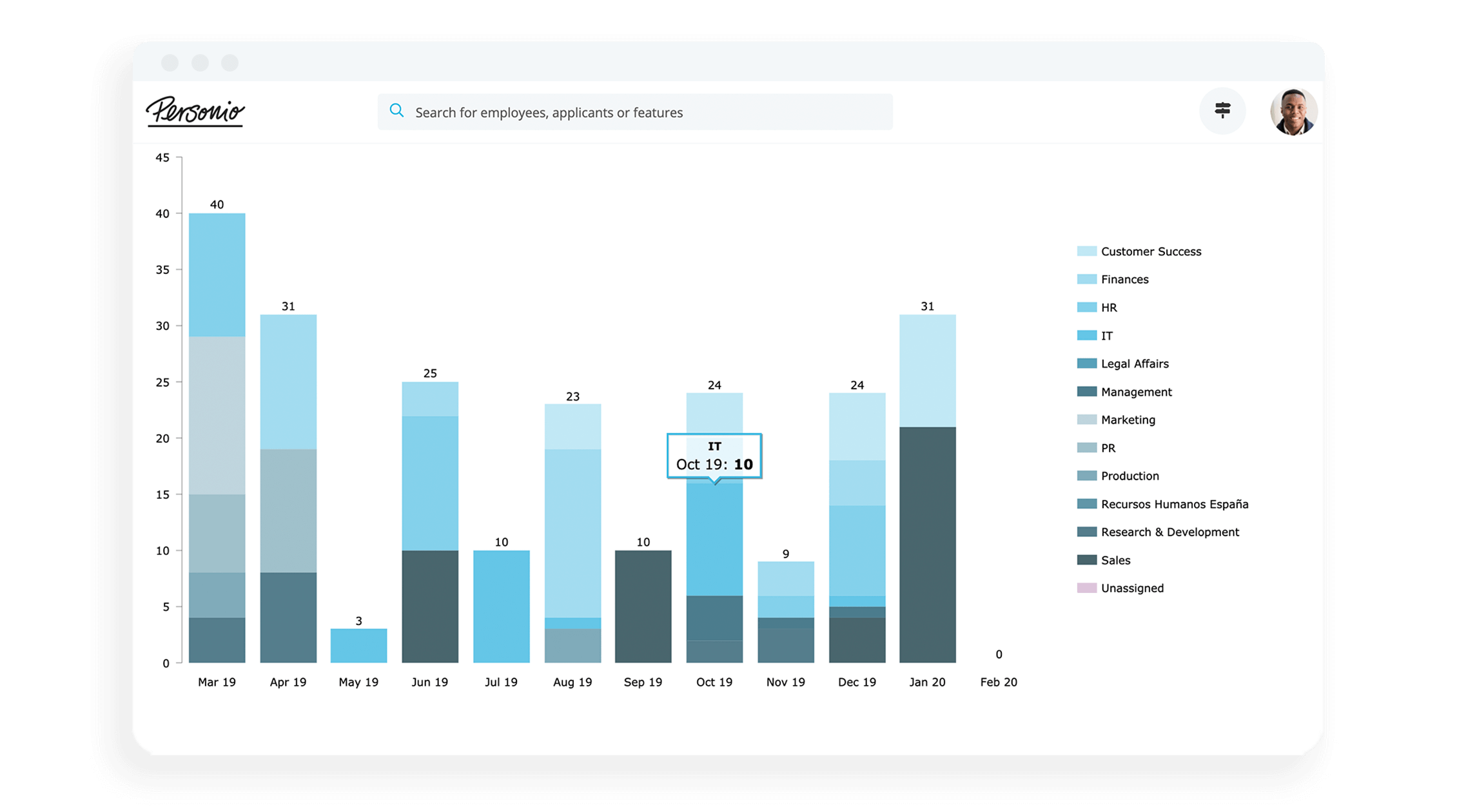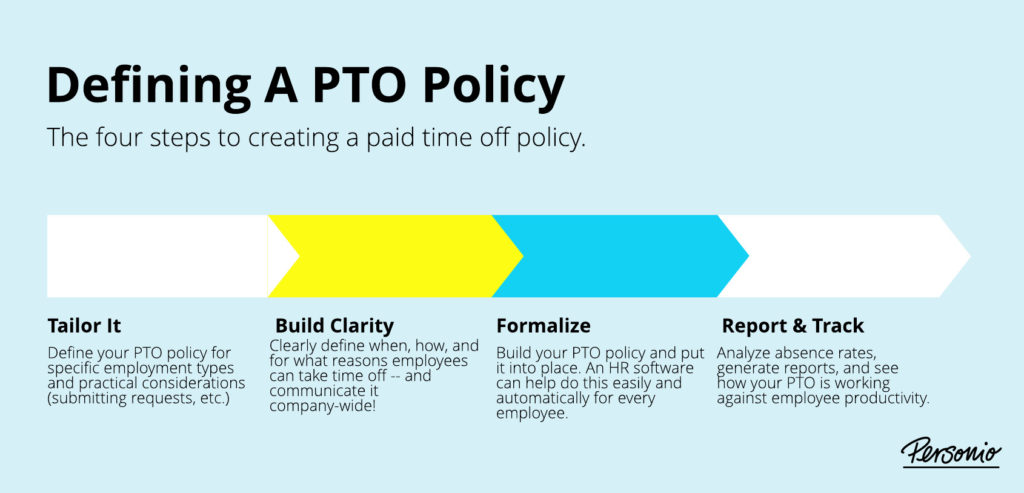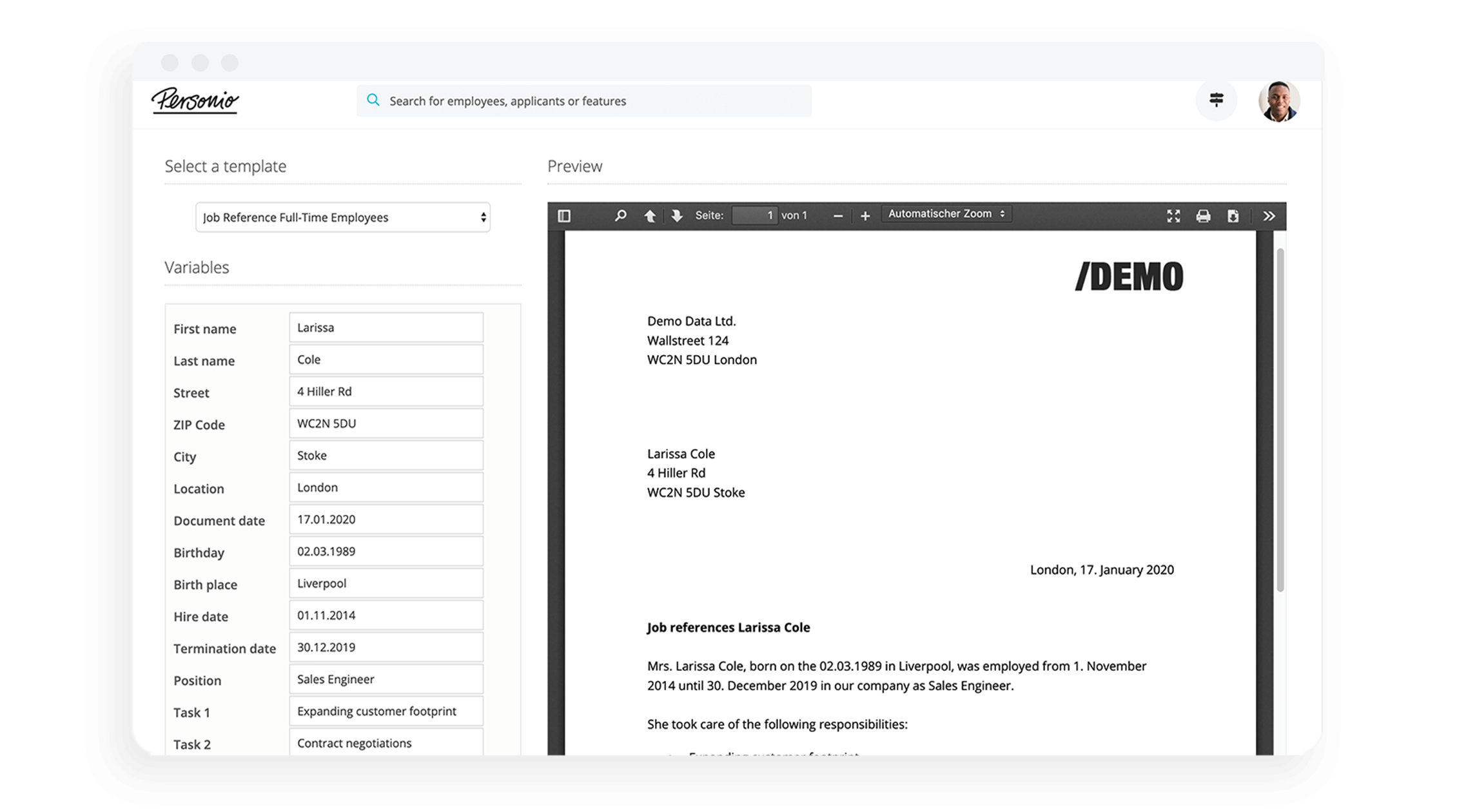What Does PTO (Paid Time Off) Mean?
What goes into a game-changing PTO policy? Paid time off, otherwise known as PTO, is a key element of the employee experience. It allows employees to recharge, take breaks, and get better at what they do.
But, the process around it can often be complex, unclear, or simply not user-friendly. In this article, we'll walk you through PTO entitlements in the UK and how to formulate a policy for your organisation.
Still tracking absences on spreadsheets? There’s now a better way.What Is PTO?
Paid Time Off (PTO) is a period of time, such as days or weeks, an employee is legally entitled to take off from work while still receiving pay from their employer. It is also known as statutory leave or annual leave.
When Does PTO Start?
An employee’s PTO starts building up as soon as they start working with a company that has a PTO policy in place. The employer typically has the final say on when they can take their PTO, and the employee is paid their standard wage or salary when compensated.
What Are The Benefits Of PTO?
Today’s employees are burnt out. Specifically, 76% of them are, at least some of the time. Whether it’s because of their workload, their work environment, or personal circumstances, if your employees aren’t motivated, they’re simply not productive — and most likely, not happy.
Offering PTO is just one way to enhanceyour employees’ work-life balance, and it’s also one of the most desired. For 30% of employees, an increase in annual leave is an incentive to change jobs.
But providing employees with paid time off requires a clear, well-thought-out policy that includes guidelines based on the employee’s specific role (and protects the company).
That said, PTO is not simply a nice-to-have, but a legal requirement based on working times. Let’s dive a bit more into that…
Get a Snapshot of PTO, Company-Wide

Create detailed reports that track absences across your organisation. Break down the data by department, team, and employee in seconds.
Build PTO Reports With PersonioWhat Is The PTO Entitlement In The UK?
In the UK, most workers who work five-day workweeks are legally entitled to 28 days of paid holiday per year, or 5.6 weeks.
Part-time workers and employees who work irregular hours, such as shift workers or term-time workers, are also entitled to PTO for every hour they work.
Calculating PTO In The UK
To calculate how much time off a part-time worker is entitled to, multiply the number of days they work in a week by 5.6.
For example, let’s say an employee works four days per week.
Days Worked x 5.6 = 4 x 5.6 = 22.4
That’s 22.4 days of PTO for that employee over the course of the year.
What Are The Types Of PTO In The UK?
In the UK, a company’s PTO policy will typically cover the many different types of paid leave and their guidelines around each. These can include are but are not limited to:
1. Maternity Leave
Maternity leave comprises the time taken off work before and after a parent gives birth. In the UK, there is a 52-week maximum for maternity leave, unless otherwise determined by an employer.
"Ordinary Maternity Leave” covers the first 26 weeks, while “Additional Maternity Leave” covers the second 26 weeks. The earliest that maternity leave can be taken is 11 weeks before the week of the due date, unless the baby is born early.
Employees who’ve given birth must take two weeks off after birth, or four weeks if they’re a factory worker.
For the first six weeks of their maternity leave, eligible employees will typically receive 90% of their average weekly earnings (before tax). For the remaining 33 weeks, they’ll receive 90% of their average weekly earnings, or £151.20 (whichever is lower).
This may differ depending on their employment type (part-time, full-time, etc.), as every employee may not qualify for statutory maternity pay.
2. Paternity Leave
Paternity leave is typically available for those whose partner has given birth or if they and their partner have adopted a child. In the UK, eligible partners are entitled to two weeks of statutory paternity leave.
Those two weeks can be taken consecutively or separately, but cannot start before the child’s day of birth, and must be finished within 56 days of their child’s birth.
Those on paternity leave typically receive a statutory paternity pay of £148.68 per week or 90% of their average weekly earnings, whichever is lower.
3. Paid Sick Leave
Paid sick leave, also known as statutory sick pay (Read More: our guide to statutory sick pay in the UK), covers employees who are ill for at least four consecutive days, including non-work days.
Employers start paying statutory sick pay from the fourth day onwards until the employee returns to work. Employees on paid sick leave can receive £94.25 for up to 28 weeks, which is paid to them on their standard payday, with taxes and National Insurance deducted as usual.
4. Compassionate Leave
When an employee’s dependent or relative falls ill, employers often provide compassionate leave, or, following the death of a loved one, bereavement leave.
There’s no legal obligation for employers to offer paid or unpaid compassionate leave or bereavement leave, but it’s definitely encouraged for employers who want to support their employees when they need it most.
UK workers are, though, entitled to a period of unpaid time off due to:
Illness, injury, or assault
Disruption of care arrangements
Their child being involved in an incident at school
5. Paid Annual Leave
Also known as statutory leave entitlement, UK employees are entitled to paid annual leave in the form of 28 days or 5.6 weeks of vacation, as mentioned above. Bank holidays may be included in statutory leave, depending on the employer.
Transform How You Record PTO

Keep track of holiday and PTO entitlements for each employee within your organisation. Save time and reduce your admin tasks with smarter absence management.
Manage Absences With Personio
Should Your Policy Include Designated PTO Or Unlimited PTO?
Unlimited paid time off policies are common for companies who want to attract top talent. It’s a steadily growing trend in the UK, with a 20% increase in jobs offering unlimited PTO between 2017 and 2018.
That said, offering unlimited paid time off can actually have adverse effects; employees can feel more anxiety about taking time off since there’s no set limit, and can actually end up taking fewer holidays.
This may sound great for productivity, but it can diminish employee morale and motivation very quickly, which will only decrease productivity in the long run.
To bypass those issues, some companies will implement a mandatory minimum number of days employees must take off, along with unlimited PTO. This provides employees with the guidelines they need and desire, while still providing the freedom to confidently request additional time off.
How Employees And Companies Benefit From PTO
For employees, the major advantage of receiving paid time off is pretty cut and dry: Their work pays them, even when they’re not working. But really, it’s so much more than that — and their employers reap the benefits, too.
Improved Mental And Physical Health | When an employee says their job is killing them, they may not be completely overreacting. Long work hours can increase an employee’s mortality by 20% due to the mental, emotional, and physical stress they experience. Never underestimate the power of an afternoon away from the desk or an extra-long weekend. On the international stage, UK employees have slightly worse health and well-being at work than the average employee. But when they’re given paid time off, they have more time to explore their creative hobbies, stay active, and socialize, all of which can improve their quality of life and positively impact the work they do in the office. |
Increased Employee Retention | According to LinkedIn’s 2020 Global Talent Trends Report, companies rated highly on benefits and compensation saw 56% lower attrition, and those with flexible work arrangements saw 137% higher headcount growth. Offering a PTO policy can easily fit into both of those categories, and is a clear long-term benefit for employees. |
Better Productivity And Performance | Even just one week of vacation per year can have a drastic impact on how an employee views their job, leadership team, and company overall. In a survey by O.C. Tanner, 70% of employees that regularly take a week of vacation (or more) are highly motivated to contribute to their company’s success, whereas only 55% of employees that don’t take vacation feel that same motivation. PTO can be used as a way to recognize and reward an employee’s hard work or dedication to the company. And recognition goes a long way — companies with integrated recognition strategies are four times more likely to have engaged employeess , twice as likely to have increased their revenue over the last year, and 44% less likely to have burnt-out employees. |
How Do You Define A PTO Policy?
Now that we’ve covered the basics and importance of a PTO policy, let’s dive into how you can define your own:

Take a Tailored Approach
Customising an employee’s PTO policy is often the best approach, as you can tailor it to their employment type (full-time, part-time, shift worker, etc.) as well as their seniority in the company. The PTO policy for each employee should answer the following questions:
How much paid time off can the employee take per year?
How many work hours per week is their PTO based on?
How will additional hours/overtime worked by the employee impact their PTO?
What are the company’s policies for maternity leave, paternity leave, sick leave, compassionate leave, and bereavement leave?
Will you implement PTO rollover or a PTO bank? If so, how will it be calculated?
Is there a limit to how much PTO can carry over to the next year?
What is the minimum PTO required per year (1 hour, half a day, 1 day, etc.)?
What is the company’s stance on emergency circumstances and paid (or unpaid) time off?
Will they be compensated for their unused PTO if they get let go or laid off?
How may their policy change in the future?
Your PTO policy should also cover the more practical elements of how, where, and when employees can request time off:
How do employees submit their requests? (via email, HR software, calendar requests, etc.)
Will their requests require manager/supervisor approval? If so, who is responsible for that approval?
How far in advance do they need to submit their requests?
Be Clear About PTO
In a 2019 Vitality survey, 28% of employees didn’t take time off because they didn’t think their mental health concern was a valid reason, and 22% said the same about their physical health concern.
When employees don’t know what is deemed a “valid” reason for taking time off, they’ll typically avoid it, and their issues (or even resentment towards the company) will only grow.
Formalise & Distribute Your PTO Policy
Once you’ve established your company’s PTO policy, immediately add it into your employee onboarding and training documents so it becomes a seamless part of your process. (Psst: If you’re still doing this by hand, we have to tell you — there’s a better, easier way to manage your HR processes.)
Review the policy with the necessary team members so everyone delivers consistent information to employees when questions arise.
If the PTO policy is new, or newly updated, share it with employees — and be open to their feedback. Your policy may change over time as the company and employees’ needs change, adding on to what works and improving what doesn’t.
Streamline PTO Policies With Templates

Choose from a number of tried-and-tested HR templates that allow you to store PTO policies, distribute them across your teams and keep everything related to leave clear and on-record for your employees.
Organise Your Policies With PersonioReport And Track PTO
No matter the size of your company, managing numerous leave requests can become overwhelming very quickly. By digitising your process with Personio’s Absence Management Software, you can:
Review and approve leave requests in a snap
Receive a comprehensive overview of every employee’s leave history
Automatically calculate an employee’s remaining vacation time
Analyse your company’s absence rates
And more…
